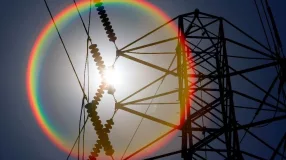The increased use of natural gas in the United States has been a catalyst for job creation, economic growth and the reduction of greenhouse gas emissions. In order to meet the growing demand for natural gas, the United States needs additional natural gas pipeline capacity.
The existing regulatory framework governing pipeline permitting has restricted the country’s ability to fully capitalize on the benefits of natural gas. Procedural inadequacies delay an already lengthy approval process, which further limits access to natural gas in certain regions of the country. President Trump’s April 10 executive order on energy infrastructure will help reduce unnecessary and burdensome regulatory barriers by directing federal agencies to clarify and improve existing processes, guidance and regulations.
With national demand for natural gas continuing to climb steadily, it is imperative that the pipeline permitting and approval process be predictable and efficient. For instance, President Trump’s executive order directs the Environmental Protection Agency to review and revise, as necessary, water quality certification guidance and regulations issued under Section 401 of the Clean Water Act. The Clean Water Act should not be used as a means to block the construction of interstate pipelines and limit access to natural gas – such abuse results in reduced job growth and economic development, lost revenue and increased consumer energy prices.
Educating policymakers and key influencers on the many benefits of natural gas infrastructure is one of INGAA’s top priorities. At the same time, INGAA advocates for improvements to the pipeline permitting process to allow for both the safe and efficient construction of interstate natural gas pipelines.
In fact, these two priorities go hand in hand with another key focus for INGAA and our members. Collectively, we support the updating of the Pipeline and Hazardous Materials Safety Administration’s (PHMSA’s) pipeline safety rules. INGAA member companies continuously undertake enhancements to safety measures, and overall industry efforts demonstrate an unwavering commitment to pipeline safety. However, the existing pipeline safety regulations are outdated and do not reflect the technologies now available to pipeline operators. In March, INGAA wrote about the bipartisan and cross-industry support to modernize PHMSA’s pipeline safety rules as soon as possible.
The reauthorization of the Pipeline Safety Act and completion of pending updates to PHMSA rules will bring pipeline safety regulations into the 21st century. These updates will allow for the implementation of more advanced safety techniques, such as state-of-the-art inspection tools that can evaluate pipeline conditions and identify pipes in need of repair or replacement.
Aligning federal regulations and leading industry practices will make pipeline operations safer, more reliable and more environmentally sound. Together, President Trump’s executive order on infrastructure permitting and the passage of new PHMSA pipeline safety regulations will jumpstart economic activity while safely affording more Americans the financial and environmental benefits of natural gas.







